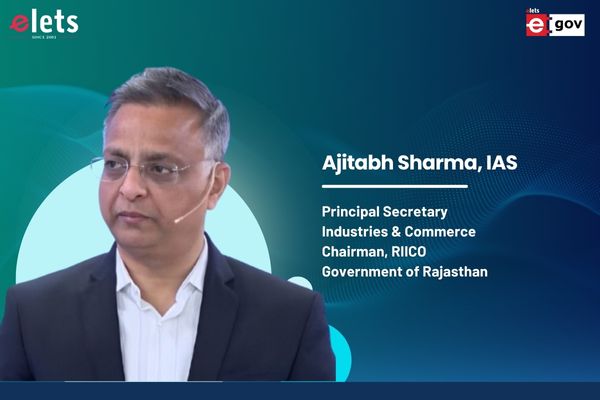
Hitachi Rail’s scale is amplified by the benefits it receives from the R&D investments made by other Hitachi divisions and the leading-edge capabilities it leverages from other business units, highlights Hemant Tiwari, Managing Director- India, Hitachi Vantara, in an exclusive interaction with Garima Pant of Elets News Network (ENN).
Hitachi has been at the forefront of driving digital innovation in various sectors. How is Hitachi Vantara leveraging its expertise to revolutionize the railway industry?

Hitachi Vantara and Hitachi Rail work collaboratively to realise the vision of a digital railway that delivers an enhanced and total passenger experience. We are leveraging the power of Big Data, and advanced analytics used for asset monitoring and predictive maintenance to transform the railway industry. Hitachi trains are equipped to give impressive amounts of data and information using sensors and analytics on a minute-to-minute basis which are utilised to further future proof our designs. Our platform provides control centers with real- time train systems data to make informed decisions and tackle possible areas of concern.

With the increasing emphasis on data-driven decision-making, how can Hitachi Vantara’s data analytics solutions help optimize railway operations and enhance passenger experience?

Hitachi is dedicated to developing industrial IoT solutions across the group. Hitachi Smart Spaces, powered by video intelligence, utilise video data and transform it into insights using AI/ML based video analytics, that can help minimize inefficiencies, streamline communications, boost public safety and optimize vital resources in the railway operations.

With the transport industry facing issues like congestion along with an evermore mobile population, computer vision algorithms now allow railways to analyze passenger flows and identify bottlenecks, and understand the composition of traffic, while predicting travel times and managing parking and crowds. Lidar is being used to detect whether train platforms are overcrowded, making it possible for passengers to be redirected. Visioning tools can even be used to spot unidentified baggage and reunite it with passengers.
The adoption of emerging technologies like artificial intelligence and the Internet of Things has the potential to revolutionize the railway industry. What role does your organization play in harnessing these technologies for railways?
Digital twins are virtual replicas of physical devices that can be used to run simulations before actual devices are built and deployed. Digital twins can take real-time IoT data and apply AI and data analytics to optimize performance.
Hitachi Vantara’s innovative Digital Twin project allows engineers to conduct testing without using real trains on live track, which has proved to be highly beneficial for passengers and the rail industry alike – including reducing costs and disruption. Using Train Monitoring System (TMS) hardware and simulating the rest of the train and the railway networks, testing can be conducted in the laboratory, rather than using live trains and available tracks to test in the open air. Creating this testing system could drastically reduce the time needed for testing, providing flexibility for manufacturers and operators to work on different projects and saving money on expensive live trials.
Also Read | Online Monitoring of Rolling Stock (OMRS) for IR
Sustainability is a key focus for the railway sector. How does Hitachi Vantara’s portfolio align with the goal of building environmentally friendly and energy-efficient railway systems?
Hitachi Rail’s scale is amplified by the benefits it receives from the R&D investments made by other Hitachi divisions and the leading-edge capabilities it leverages from other business units. With the mission of having a meaningful impact on decarbonisation and climate change, we are a world leader in developing next-generation power solutions for transit and freight that reduce carbon emissions through the use of smart power grids and on-board energy storage. Hitachi Rail initiatives will replace diesel locomotives and make existing traction power grid systems more efficient to operate. These initiatives make systems more energy efficient, use less carbon fuel, and are an important part of the Hitachi Decarbonization Strategy.
Be a part of Elets Collaborative Initiatives. Join Us for Upcoming Events and explore business opportunities. Like us on Facebook , connect with us on LinkedIn and follow us on Twitter, Instagram.
"Exciting news! Elets technomedia is now on WhatsApp Channels Subscribe today by clicking the link and stay updated with the latest insights!" Click here!













